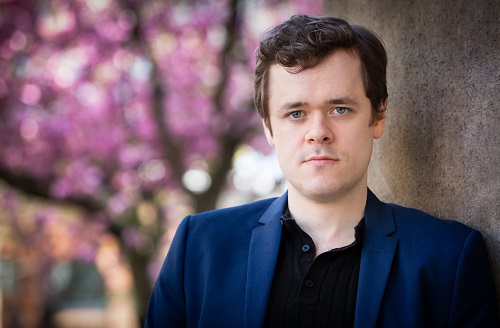 United States Haydn, Beethoven: Benjamin Grosvenor (piano), Philadelphia Orchestra / Nathalie Stutzmann (conductor), Verizon Hall, Kimmel Center, Philadelphia, 1.3.2019. (BJ)
United States Haydn, Beethoven: Benjamin Grosvenor (piano), Philadelphia Orchestra / Nathalie Stutzmann (conductor), Verizon Hall, Kimmel Center, Philadelphia, 1.3.2019. (BJ)

Haydn – Symphony No.94 in G major, ‘Surprise’
Beethoven – Piano Concerto No.1 in C major Op.15; Symphony No.4 in B flat major Op.60
It might be natural to expect that a conductor who has enjoyed a stellar parallel career as a singer specializing in baroque contralto parts would show a more instinctive sympathy for 19th-century or earlier areas of the repertoire than for music written after 1800.
Natural, perhaps, but also too facile. For of the four works I have now heard Nathalie Stutzmann conduct — Handel’s Messiah, composed in 1741 and the three pieces on this program, dating respectively from 1791, 1795, and 1806 – it was the one written last, Beethoven’s Fourth Symphony, that received under her hands by far the finest performance.
I came to this concert with my mind divided between hope and expectation. I had strongly disenjoyed Stutzmann’s Messiah here back in 2016. But I am always ready to revise my opinion of an artist upwards, and I am very happy to say that the concert under review responded much more to the hope than to the rather pessimistic expectation.
This was not at once evident. Haydn’s ‘Surprise’ Symphony was given a somewhat one-dimensional reading, Stutzmann not seeming inclined to pay much attention to subtleties of orchestral texture, and aside from Benjamin Grosvenor’s gorgeously crystalline playing of the solo part, Beethoven’s First Piano Concerto lacked any particularly strong sense of artistic commitment. (Incidentally, the program note’s ascription to Beethoven of a known ‘proclivity for long-windedness’ is news to me.)
But then came intermission, and Beethoven’s Fourth. Eccola trasformata! Suddenly there seemed to be a completely different conductor on the podium. Suddenly, she drew rich and eloquent sonorities from the violins. Suddenly, a new purposefulness in the transition from slow introduction to main Allegro.
Nor did the other movements fall below the level now reached. The slow movement, flowing with a supple grace, offered an ironic contrast to Stutzmann’s Messiah three years ago. Back then she surprised me by opening the overture without any respect for the tradition of double-dotting that ruled over baroque slow introductions. But I have never believed that this rhythmic convention (also called over-dotting) suddenly disappeared from the face of the earth when baroque style gave way to classical. The resource of exaggerating the difference between long notes and short surely continued to facilitate rhythmic fluency — and here it was, without undue emphasis, propelling the Adagio on its easily flowing course.
Then, before a sparkling account of one of Beethoven’s most bubbly finales, came a scherzo (though not so titled by the composer) that was nothing short of a rollicking, free-spirited romp.
All this came with immaculate playing from the orchestra, tuttis articulated with sovereign precision, solos by turns brilliant and radiantly expressive coming from all the usual suspects, and superbly clean and crisp timpani work from Don Liuzzi throughout the evening.
So now, all misgivings banished, or at least relegated to a forgettable past, I can happily declare myself a Stutzmann fan.
Bernard Jacobson